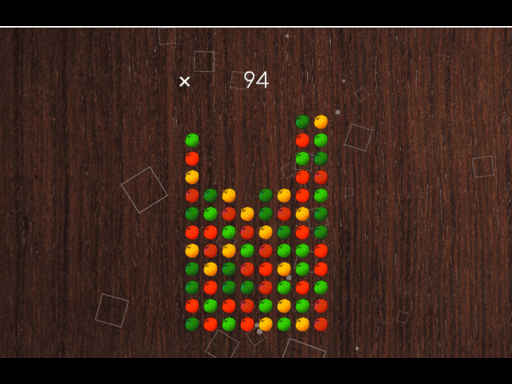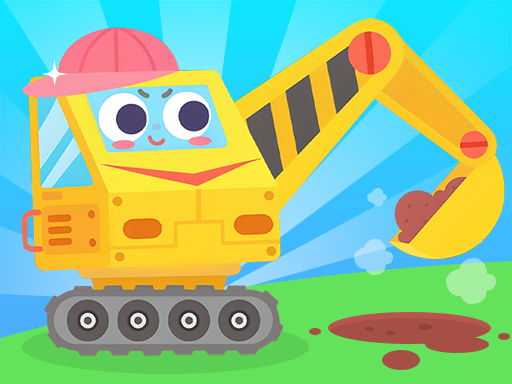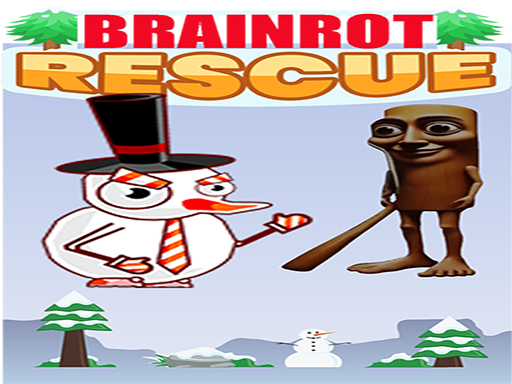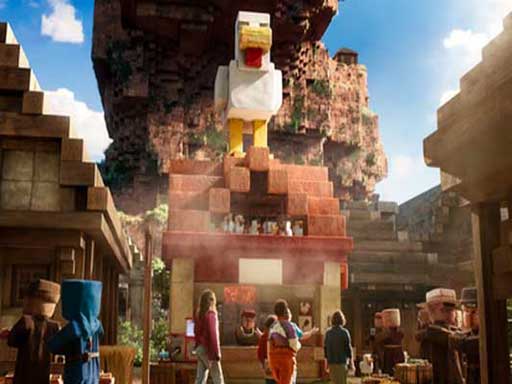Renaissance Mind-Twist: 3D Puzzles
About Renaissance Mind-Twist: 3D Puzzles
Dude, you are *not* going to believe what I stumbled upon last week. Seriously, I'm still buzzing from it. You know how I'm always on the hunt for something that just *clicks* with my brain, something that makes me lose track of time and forget the world exists? Well, I found it. It’s called *Renaissance Mind-Twist: 3D Puzzles*, and honestly, it’s redefined what I thought a puzzle game could even be.
I know, I know, "puzzles." You're probably picturing those flat, cardboard jigsaws your grandma used to do, right? The ones where you spend an hour trying to find the corner pieces and then get bored halfway through the sky. Yeah, forget all that. Throw it out the window. This isn't that. Not even close.
When I first heard the name, I was skeptical. *Renaissance Mind-Twist*? Sounded a bit… high-brow for my usual gaming diet of explosions and epic quests. But then I saw a screenshot, and man, my jaw actually dropped. It wasn't a flat image. It was… a sculpture. A fragment of some impossibly intricate device, floating in a serene, almost ethereal space, waiting to be put back together. And the pieces weren't flat little cardboard cutouts; they were these incredibly detailed, almost tactile-looking chunks of whatever the final object was.
What I love about games like this is when they take a familiar concept and just absolutely flip it on its head. This game doesn't just put a new coat of paint on the classic jigsaw; it reinvents the entire experience from the ground up by adding that third dimension. You're not just matching colors and shapes on a flat surface anymore. You're dealing with depth, with perspective, with how things fit together structurally. It’s like being a digital artisan, a master craftsman restoring some ancient, forgotten artifact piece by painstaking piece.
The first puzzle I tackled was this miniature model of what looked like one of Da Vinci’s flying machines. I mean, the detail! You could almost feel the grain of the wood, the tension in the tiny leather straps. The pieces were scattered around, not just on a table, but floating in this beautiful, soft light, each one glinting, inviting you to pick it up. And that’s where the "mind-twist" really kicks in. You grab a piece, and it’s not just a flat outline. It’s got grooves, pegs, little nubs, and curves that need to slot into another piece just *so*. You can rotate it on all three axes, spin it, flip it, zoom in, zoom out. It’s like having these virtual tweezers and a magnifying glass, meticulously trying to find the perfect angle.
There’s something magical about that moment when you’ve been turning a piece over and over, convinced it’s the right one but it just won’t *fit*, and then suddenly, with a slight adjustment of the camera angle, or a subtle tweak of your wrist, it just *snaps* into place. Not just visually, but you feel it. There’s a satisfying little haptic feedback rumble on the controller, and a gentle, almost musical chime that just screams "Nailed it!" That’s the feeling I live for in games, that little burst of dopamine that tells you you’re on the right track.
The brilliant thing about this is how it makes you think. You can’t just rely on the image on the box, because there *is* no box image. You’re building something from scratch, often without a clear picture of the final form until it starts to emerge. You’re forced to use spatial reasoning in a way that’s genuinely challenging but never frustratingly unfair. You start to develop an intuition for the shapes, for the way the light catches a particular curve, or how a shadow falls across a joint, hinting at its connection point. You’ll find yourself looking for not just matching colors, but matching *textures*, matching *angles*, matching *depths*.
I remember one puzzle, it was this incredibly ornate astrolabe. It looked like a miniature universe, all brass and intricate gears. The pieces were tiny, some almost microscopic, and the challenge wasn’t just fitting them together, but understanding the *function* of each part. You’re not just assembling an image; you’re reconstructing a mechanism. And when you finally slot that last gear into place, and you see the whole thing whir into life, the rings slowly turning, the pointers aligning, it’s not just a completed puzzle, it’s a moment of genuine awe. You feel like you’ve actually built something, understood something complex.
What's fascinating is how the game encourages different approaches. Sometimes I'll start by trying to build the "base," finding all the pieces that look like they form the foundation. Other times, I'll pick out a really distinctive, unique piece and try to build *around* it, like finding the centerpiece of a mosaic. And then there are those moments when you’re just absolutely stumped, and you take a break, walk away for a bit, and when you come back, suddenly the solution just *leaps* out at you. It’s that classic puzzle game magic, you know? The one where your brain keeps working on it in the background even when you’re not actively playing.
The Renaissance theme isn't just window dressing either. It’s woven into the very fabric of the game. Each puzzle is a journey through that incredible era of innovation and artistry. You’re reconstructing fragments of frescoes, assembling miniature architectural marvels like a tiny Duomo, or putting together the skeleton of some fantastic beast from a natural history collection. The game doesn't just show you the finished product; it makes you *earn* the appreciation for the craftsmanship that went into these historical objects. You can almost hear the soft rustle of parchment, the distant clang of a blacksmith, the murmur of a scholar at work.
In my experience, the best moments come when you hit that flow state. You know, when you're so absorbed, so focused, that the hours just melt away. With *Renaissance Mind-Twist*, that happens constantly. I'll sit down, thinking I'll just do one quick puzzle, and the next thing I know, the sun's gone down, my coffee's cold, and I've completed three intricate masterpieces. It’s incredibly meditative, almost therapeutic. The gentle, ambient soundtrack, the soft glow of the pieces, the satisfying *thunk* as they lock together – it all combines to create this incredibly calming, yet stimulating, experience.
Honestly, I’ve always been drawn to games that challenge my mind, that make me feel smarter for having played them. And this game delivers that in spades. It’s not about reflexes or button mashing; it’s about patience, observation, and a really satisfying kind of spatial logic. It makes you feel like a detective, a conservator, an engineer, all rolled into one. The frustration you sometimes feel when a piece just won't cooperate only makes the eventual breakthrough that much sweeter. That little sigh of relief, that triumphant grin when a complex section finally locks into place – that’s pure gaming joy right there.
The real magic happens when you complete a puzzle and the camera slowly pulls back, revealing the fully restored object in all its glory. Sometimes it’s a breathtaking piece of art, other times it’s a functional device that starts to subtly move or glow. And you just sit there for a moment, admiring your handiwork, feeling that deep satisfaction of having brought something beautiful and complex back to life. It’s a feeling of accomplishment that few other games can replicate.
Seriously, you gotta try it. If you've ever enjoyed the quiet satisfaction of building something, or the thrill of solving a complex problem, then this game is absolutely for you. It’s not just a puzzle game; it’s an experience. It’s a journey into craftsmanship, history, and the incredible ingenuity of the human mind. And it's probably going to twist your brain in the best possible way. Just wait until you encounter some of the later puzzles – they’re just mind-bendingly clever. You'll thank me, I promise.
I know, I know, "puzzles." You're probably picturing those flat, cardboard jigsaws your grandma used to do, right? The ones where you spend an hour trying to find the corner pieces and then get bored halfway through the sky. Yeah, forget all that. Throw it out the window. This isn't that. Not even close.
When I first heard the name, I was skeptical. *Renaissance Mind-Twist*? Sounded a bit… high-brow for my usual gaming diet of explosions and epic quests. But then I saw a screenshot, and man, my jaw actually dropped. It wasn't a flat image. It was… a sculpture. A fragment of some impossibly intricate device, floating in a serene, almost ethereal space, waiting to be put back together. And the pieces weren't flat little cardboard cutouts; they were these incredibly detailed, almost tactile-looking chunks of whatever the final object was.
What I love about games like this is when they take a familiar concept and just absolutely flip it on its head. This game doesn't just put a new coat of paint on the classic jigsaw; it reinvents the entire experience from the ground up by adding that third dimension. You're not just matching colors and shapes on a flat surface anymore. You're dealing with depth, with perspective, with how things fit together structurally. It’s like being a digital artisan, a master craftsman restoring some ancient, forgotten artifact piece by painstaking piece.
The first puzzle I tackled was this miniature model of what looked like one of Da Vinci’s flying machines. I mean, the detail! You could almost feel the grain of the wood, the tension in the tiny leather straps. The pieces were scattered around, not just on a table, but floating in this beautiful, soft light, each one glinting, inviting you to pick it up. And that’s where the "mind-twist" really kicks in. You grab a piece, and it’s not just a flat outline. It’s got grooves, pegs, little nubs, and curves that need to slot into another piece just *so*. You can rotate it on all three axes, spin it, flip it, zoom in, zoom out. It’s like having these virtual tweezers and a magnifying glass, meticulously trying to find the perfect angle.
There’s something magical about that moment when you’ve been turning a piece over and over, convinced it’s the right one but it just won’t *fit*, and then suddenly, with a slight adjustment of the camera angle, or a subtle tweak of your wrist, it just *snaps* into place. Not just visually, but you feel it. There’s a satisfying little haptic feedback rumble on the controller, and a gentle, almost musical chime that just screams "Nailed it!" That’s the feeling I live for in games, that little burst of dopamine that tells you you’re on the right track.
The brilliant thing about this is how it makes you think. You can’t just rely on the image on the box, because there *is* no box image. You’re building something from scratch, often without a clear picture of the final form until it starts to emerge. You’re forced to use spatial reasoning in a way that’s genuinely challenging but never frustratingly unfair. You start to develop an intuition for the shapes, for the way the light catches a particular curve, or how a shadow falls across a joint, hinting at its connection point. You’ll find yourself looking for not just matching colors, but matching *textures*, matching *angles*, matching *depths*.
I remember one puzzle, it was this incredibly ornate astrolabe. It looked like a miniature universe, all brass and intricate gears. The pieces were tiny, some almost microscopic, and the challenge wasn’t just fitting them together, but understanding the *function* of each part. You’re not just assembling an image; you’re reconstructing a mechanism. And when you finally slot that last gear into place, and you see the whole thing whir into life, the rings slowly turning, the pointers aligning, it’s not just a completed puzzle, it’s a moment of genuine awe. You feel like you’ve actually built something, understood something complex.
What's fascinating is how the game encourages different approaches. Sometimes I'll start by trying to build the "base," finding all the pieces that look like they form the foundation. Other times, I'll pick out a really distinctive, unique piece and try to build *around* it, like finding the centerpiece of a mosaic. And then there are those moments when you’re just absolutely stumped, and you take a break, walk away for a bit, and when you come back, suddenly the solution just *leaps* out at you. It’s that classic puzzle game magic, you know? The one where your brain keeps working on it in the background even when you’re not actively playing.
The Renaissance theme isn't just window dressing either. It’s woven into the very fabric of the game. Each puzzle is a journey through that incredible era of innovation and artistry. You’re reconstructing fragments of frescoes, assembling miniature architectural marvels like a tiny Duomo, or putting together the skeleton of some fantastic beast from a natural history collection. The game doesn't just show you the finished product; it makes you *earn* the appreciation for the craftsmanship that went into these historical objects. You can almost hear the soft rustle of parchment, the distant clang of a blacksmith, the murmur of a scholar at work.
In my experience, the best moments come when you hit that flow state. You know, when you're so absorbed, so focused, that the hours just melt away. With *Renaissance Mind-Twist*, that happens constantly. I'll sit down, thinking I'll just do one quick puzzle, and the next thing I know, the sun's gone down, my coffee's cold, and I've completed three intricate masterpieces. It’s incredibly meditative, almost therapeutic. The gentle, ambient soundtrack, the soft glow of the pieces, the satisfying *thunk* as they lock together – it all combines to create this incredibly calming, yet stimulating, experience.
Honestly, I’ve always been drawn to games that challenge my mind, that make me feel smarter for having played them. And this game delivers that in spades. It’s not about reflexes or button mashing; it’s about patience, observation, and a really satisfying kind of spatial logic. It makes you feel like a detective, a conservator, an engineer, all rolled into one. The frustration you sometimes feel when a piece just won't cooperate only makes the eventual breakthrough that much sweeter. That little sigh of relief, that triumphant grin when a complex section finally locks into place – that’s pure gaming joy right there.
The real magic happens when you complete a puzzle and the camera slowly pulls back, revealing the fully restored object in all its glory. Sometimes it’s a breathtaking piece of art, other times it’s a functional device that starts to subtly move or glow. And you just sit there for a moment, admiring your handiwork, feeling that deep satisfaction of having brought something beautiful and complex back to life. It’s a feeling of accomplishment that few other games can replicate.
Seriously, you gotta try it. If you've ever enjoyed the quiet satisfaction of building something, or the thrill of solving a complex problem, then this game is absolutely for you. It’s not just a puzzle game; it’s an experience. It’s a journey into craftsmanship, history, and the incredible ingenuity of the human mind. And it's probably going to twist your brain in the best possible way. Just wait until you encounter some of the later puzzles – they’re just mind-bendingly clever. You'll thank me, I promise.
Enjoy playing Renaissance Mind-Twist: 3D Puzzles online for free on Coduxa. This Puzzle game offers amazing gameplay and stunning graphics. No downloads required, play directly in your browser!
How to Play
Mouse click or tap to play





Comments
This game is awesome! I love the graphics and gameplay.
One of the best games I've played recently. Highly recommended!